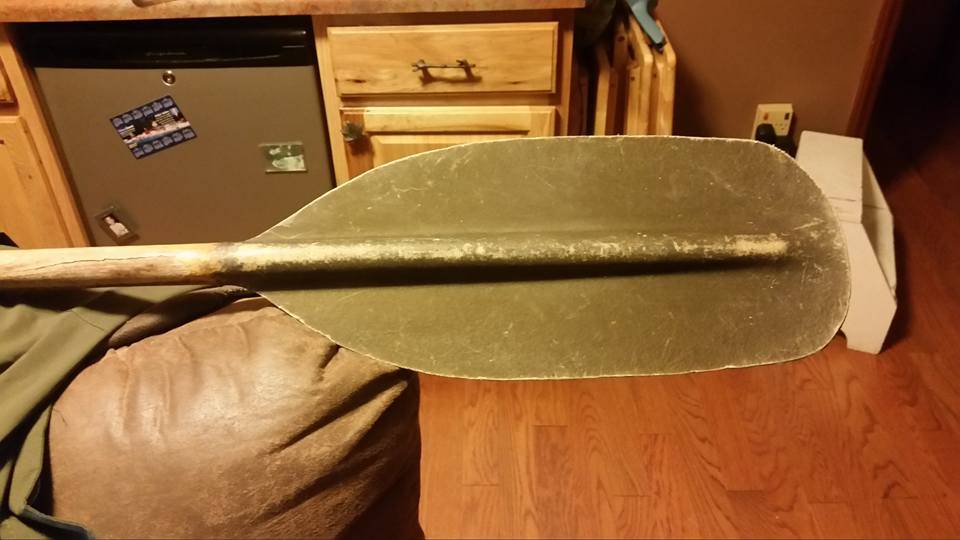No matter what paddle you get, don’t use it to push off rocks, stumps etc. Either get 6-8 ft pole to do that or a cheap aluminum/plastic paddle. The latter has the advantage of giving you an extra paddle in case something happens to the main one.
Yes, they can be too delicate. I will no longer use my Zaveral Medium straight shaft to paddle upstream in shallow water with a gravelly bottom, because the edge got really chewed up.
@Yanoer said:
Yes, they can be too delicate. I will no longer use my Zaveral Medium straight shaft to paddle upstream in shallow water with a gravelly bottom, because the edge got really chewed up.
Yes, you are right about that, but let’s put this back into the context intended by the original poster. Any medium-grade paddle by Bending Branches, which is the sort of paddle that the OP was afraid might be too delicate, would survive that same kind of use, day after day, with hardly a trace of wear. The rock-guard material on the blade of a Bending Branches paddle is practically indestructible.
@Guideboatguy said:
Yes, you are right about that, but let’s put this back into the context intended by the original poster. Any medium-grade paddle by Bending Branches, which is the sort of paddle that the OP was afraid might be too delicate, would survive that same kind of use, day after day, with hardly a trace of wear. The rock-guard material on the blade of a Bending Branches paddle is practically indestructible.
Maybe I’ll put one of my Bending Branches paddles with the rock-guard material to the test some day. I’ll be surprised if it doesn’t suffer many chips and scratches under that particular abuse. I’d expect an old fiberglass or plastic whitewater paddle to hold up the best for that abuse.
most durable paddle I had a buddy made for me- wood shaft and T grip- glass blade- then whole blade and shaft wrapped in dynel, painted with grey mazda autobody paint- very strong- eventually the wood went soft under the t grip and down into the top of the shaft- used to routinely chuck that thing up on boulders which made getting out of the c1 easier to video commercial raft trips.
Context is key… The OP is on moving water not whitewater. Any medium grade paddle will be sufficient… I have an old Norse for the real stuff… Its bombproof… glass and metal.
context is key, thus the earlier suggestion to the op for the cheap carlisle “to push off rocks and stumps”,
When folks mention “rock guard” material sometimes they’re talking about a plastic or aluminum insert strip along the edges or bottom of the paddle but often they’re talking about dynel. I don’t know what material bb uses as their “rock guard” but do know some manufacturers (like silver creek) used dynel.
I don’t know why manufacturers never sheaved shafts or used dynel on a whole paddle face like my buddy did for me but it made for a really strong paddle-
maybe the price of the material, difficulty to work with, or maybe there wasn’t a demand for a paddle that could take that much abuse
one thing about an old norse- you not only have a strong paddle but you’re also ready to do viking warfare- .the perfect paddle for paddling ww and also plundering small villages along the river banks, you can barely even draw blood with my carlisle
a different context for a different type of “norris” paddle
http://www.norrissales.com/products/traffic-signs/24-stopslow-paddles-
those “norris” paddles ought to hold up pretty well too and you get the added benefit of directing boat traffic with them
Dynel is pretty easy to work with, at least the 5 oz/sq yd plain weave material I have used. It has good abrasion resistance, but in terms of tensile and compression strength, I don’t think it is as strong as a comparable thickness of fiberglass, especially S fiberglass. Dynel sleeve is available for sheathing paddle shafts, and I have one Cricket canoe paddle that has a portion of the shaft sheathed in Dynel.
But Dynel has some disadvantages. It does not wet out and cure clear like fiberglass and at best is translucent, so it is cosmetically less desirable than fiberglass when used on wood paddles. It doesn’t look to bad for edge treatment. Dynel fibers also sop up a lot of resin for the thickness of the fabric which, of course, adds considerable weight. I think most paddle makers who choose to reinforce the entire blade of wood paddles prefer fiberglass because it looks better and can have a better strength to weight ratio.
